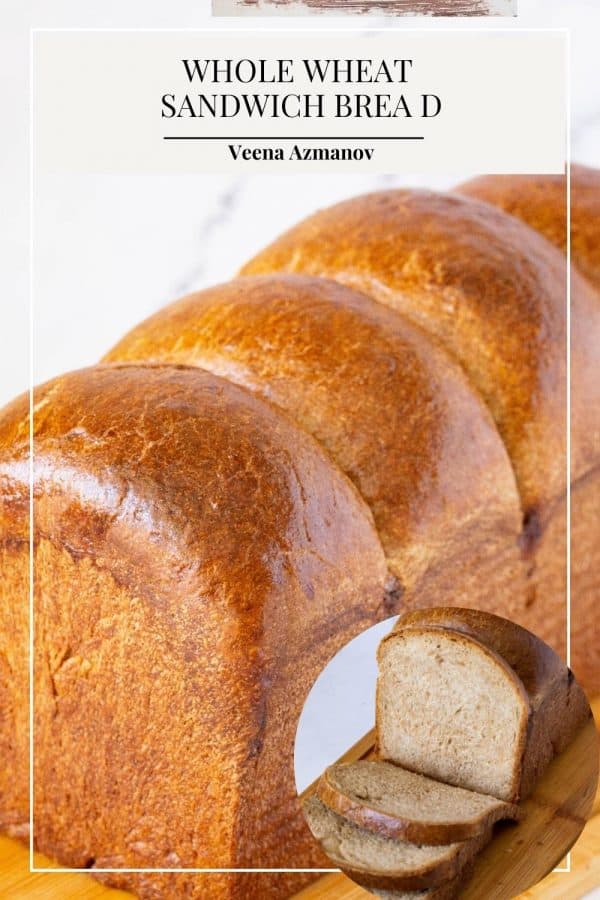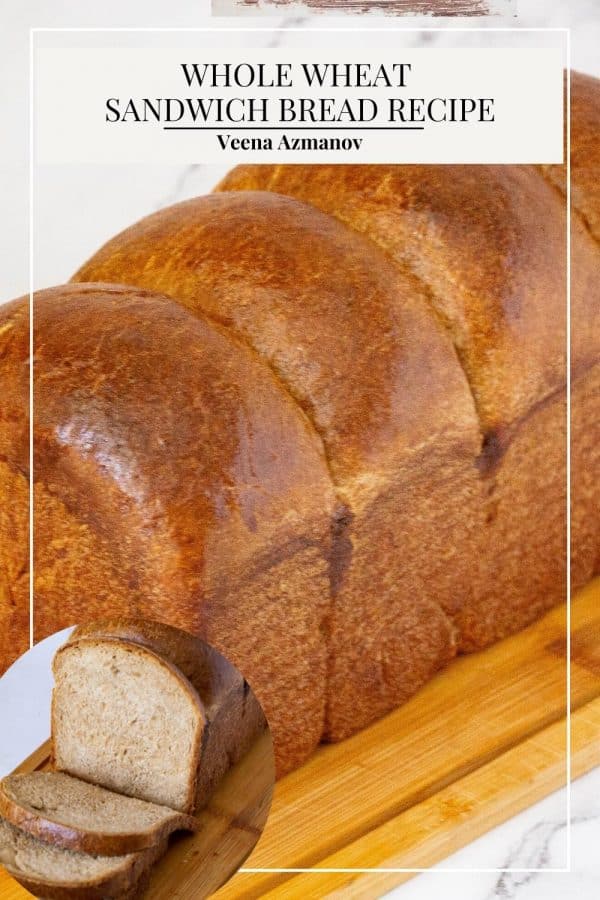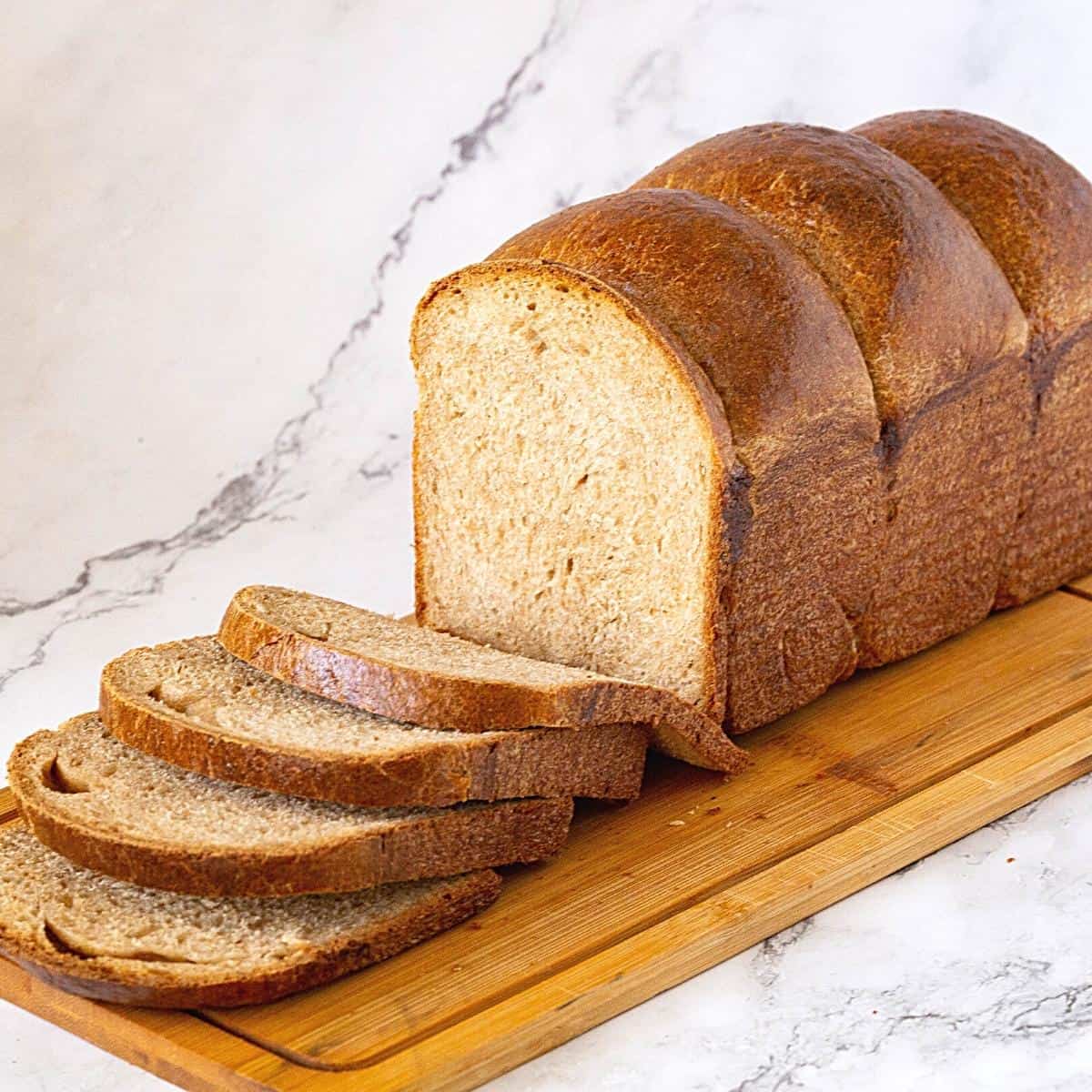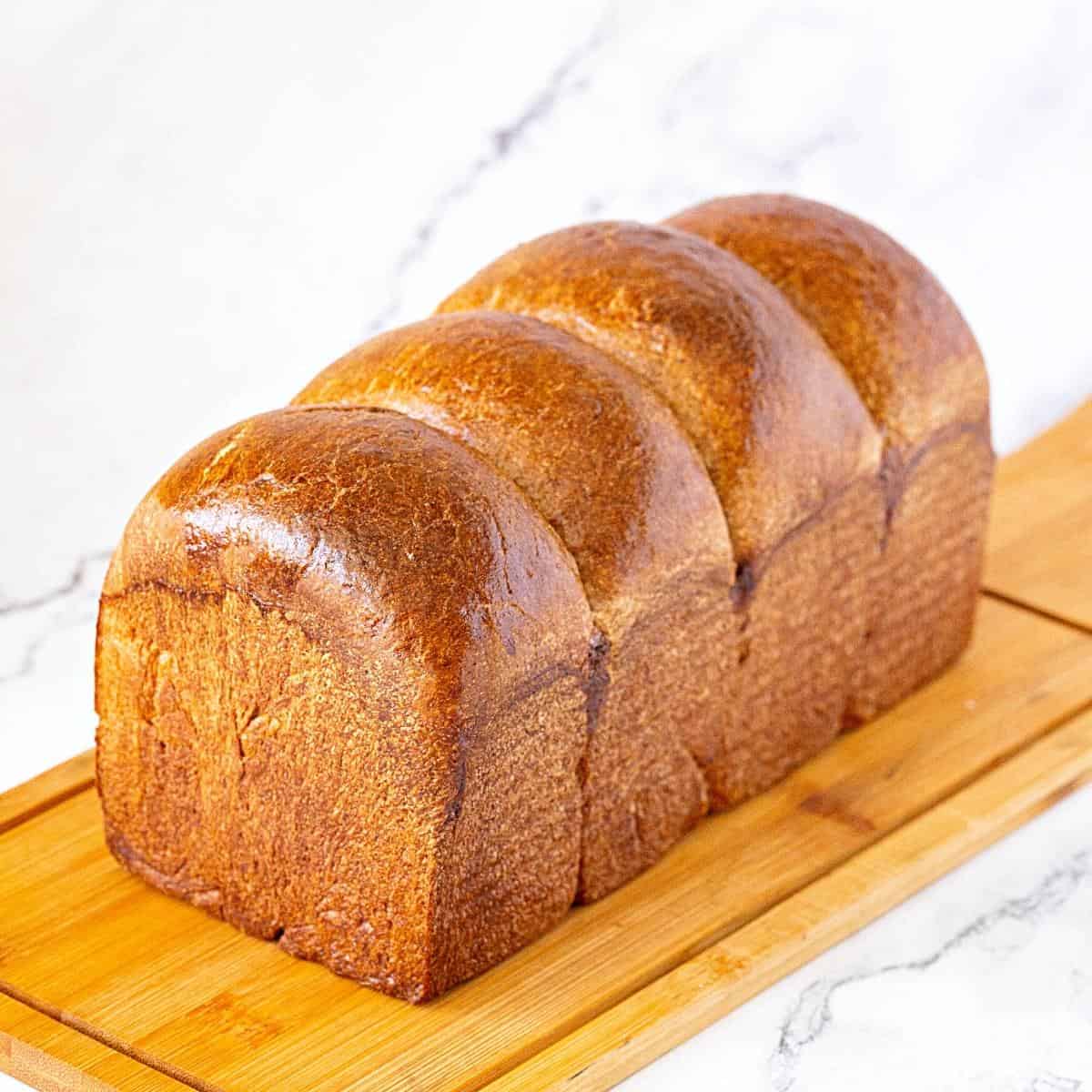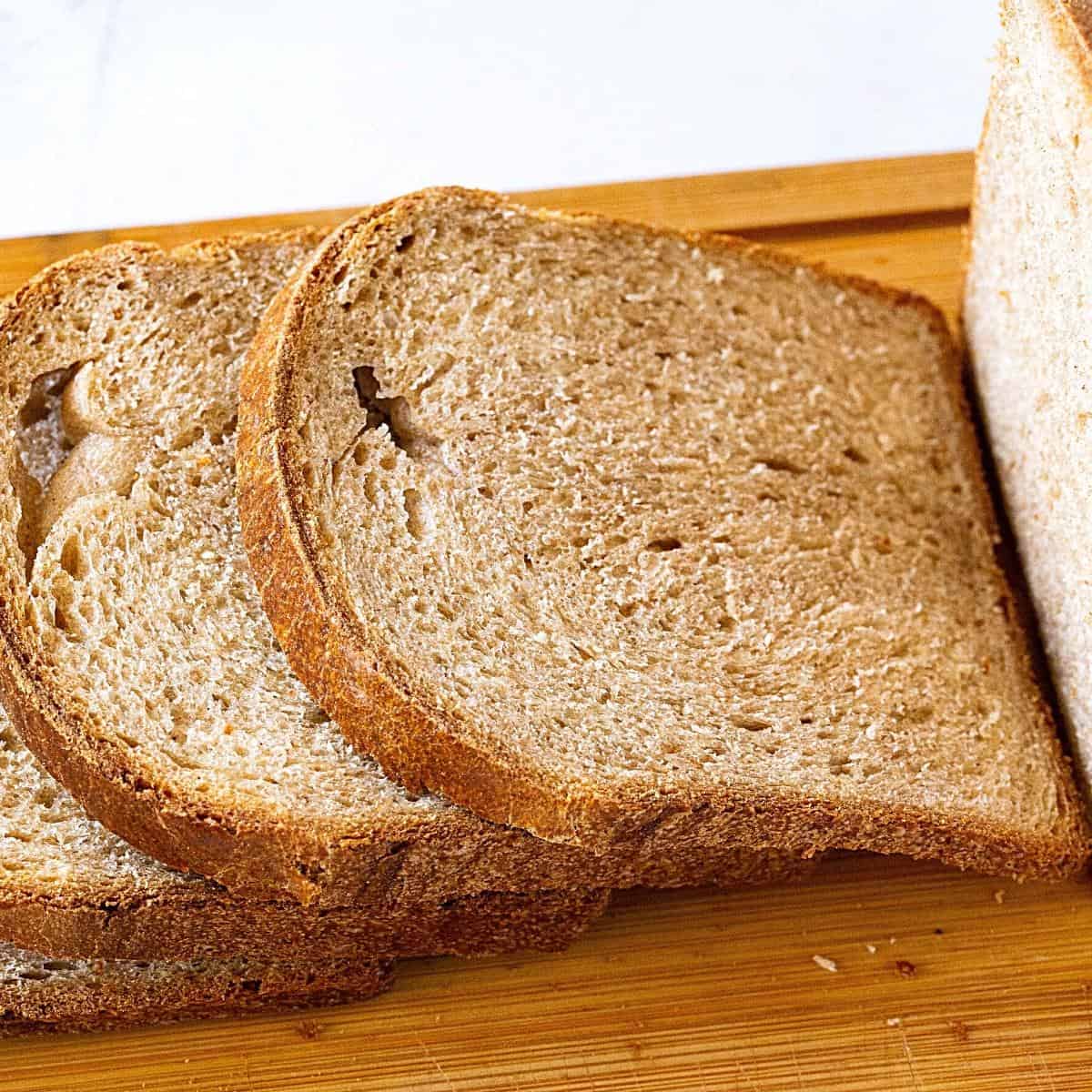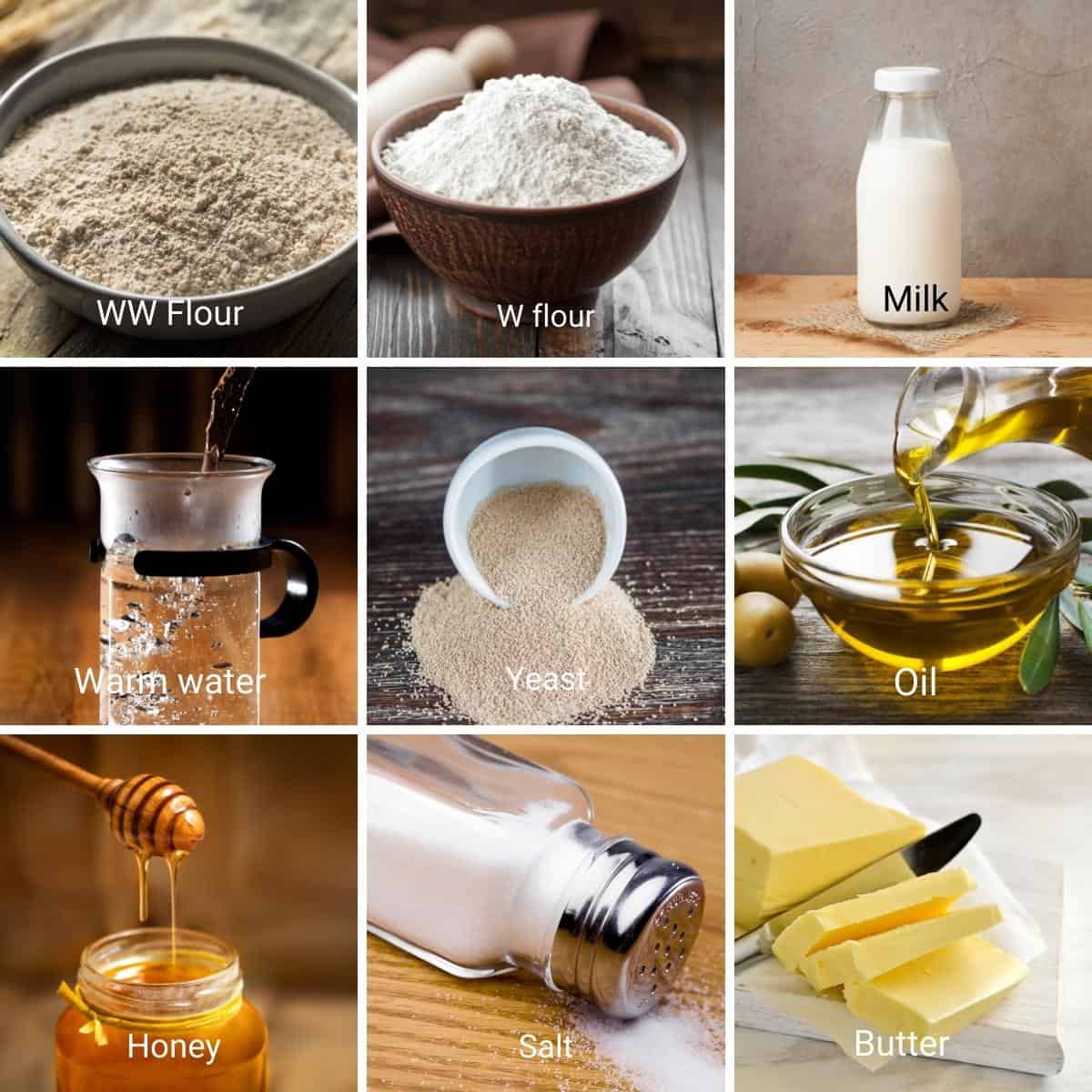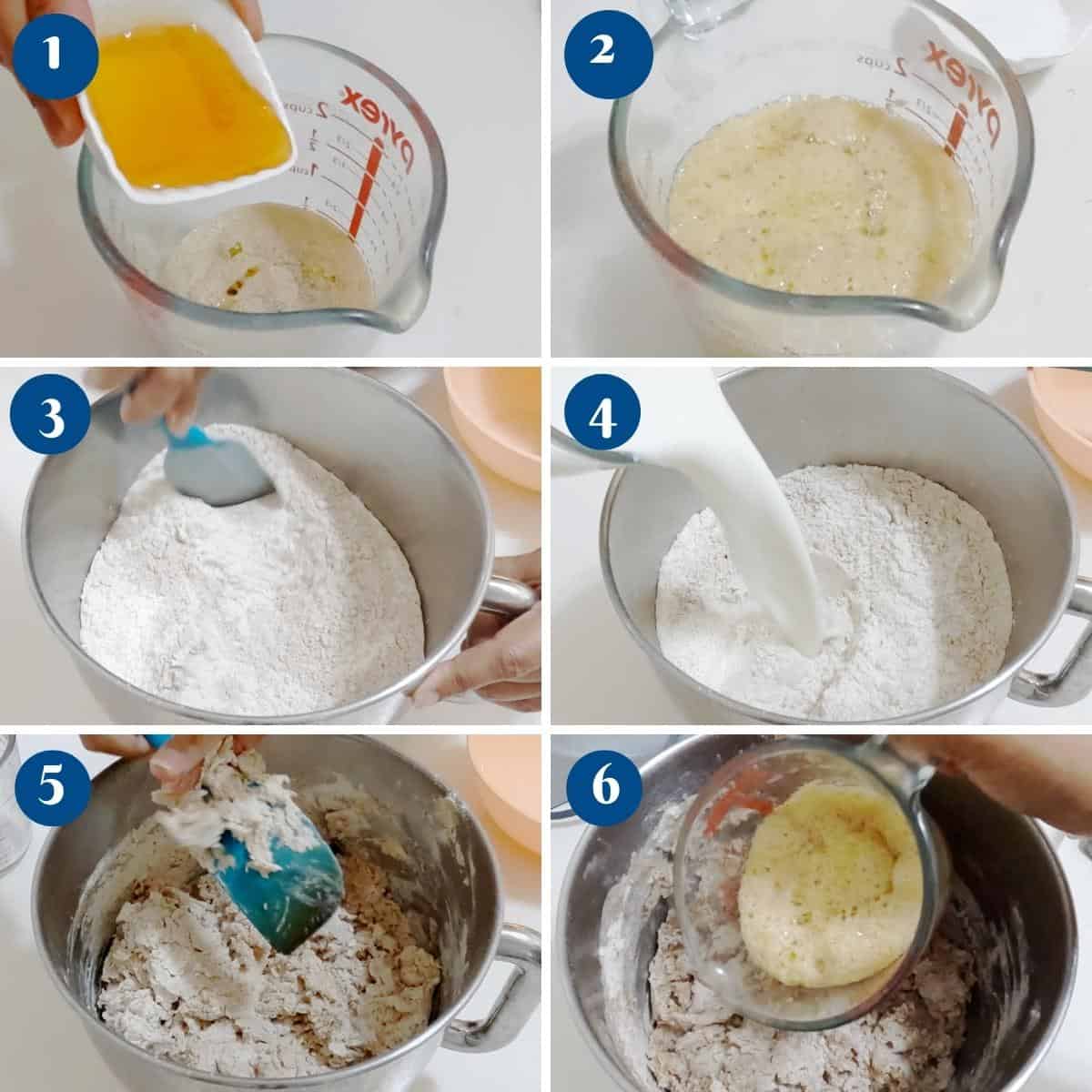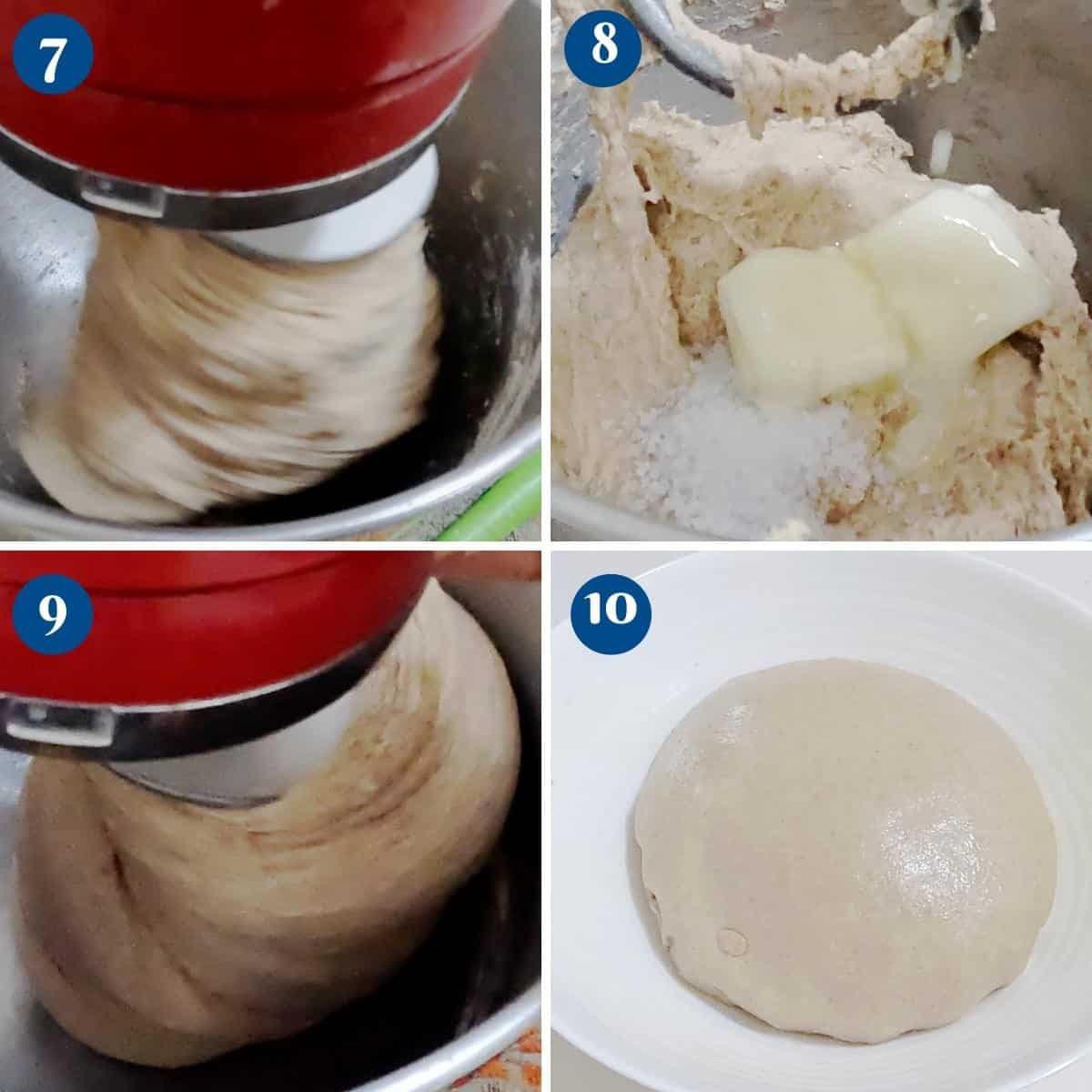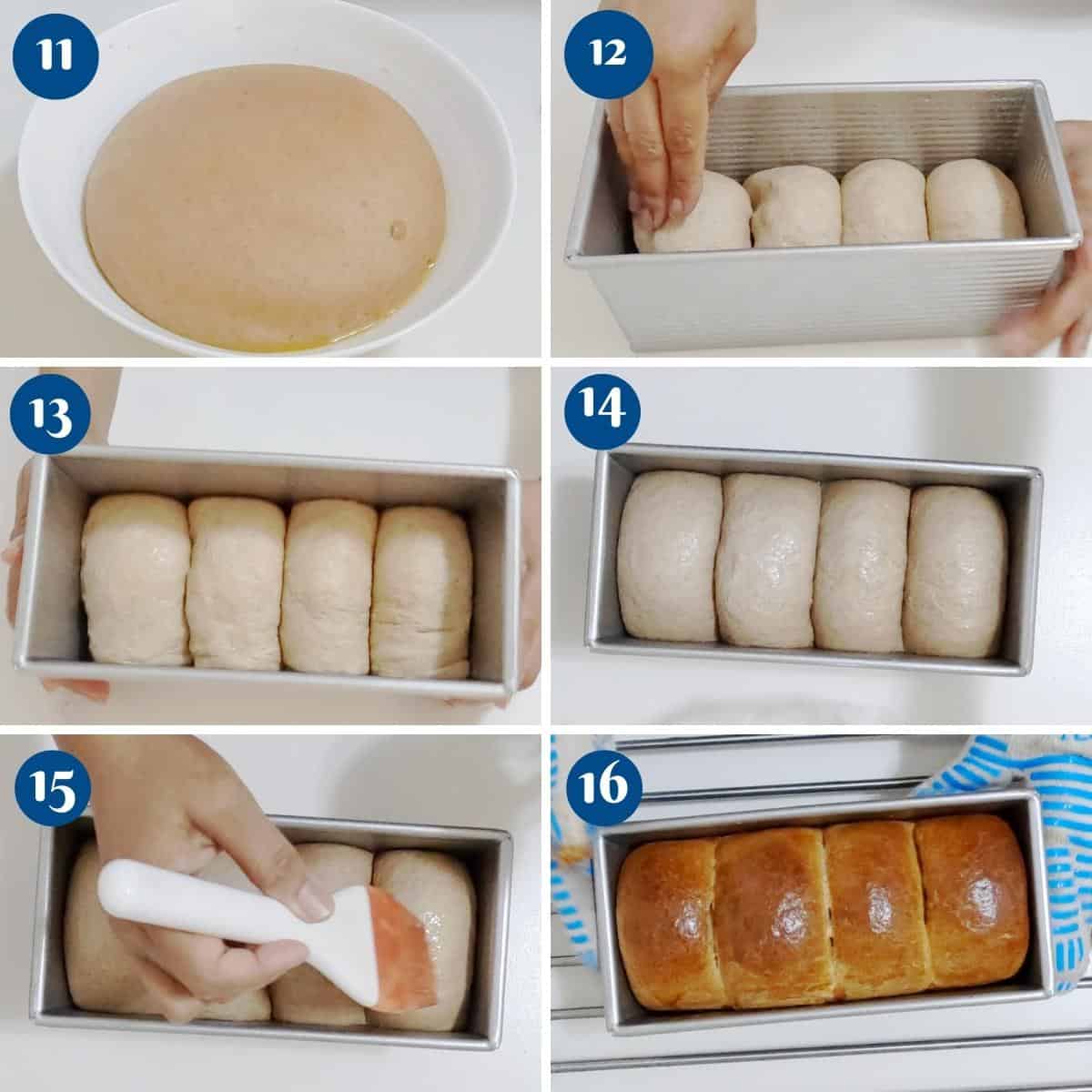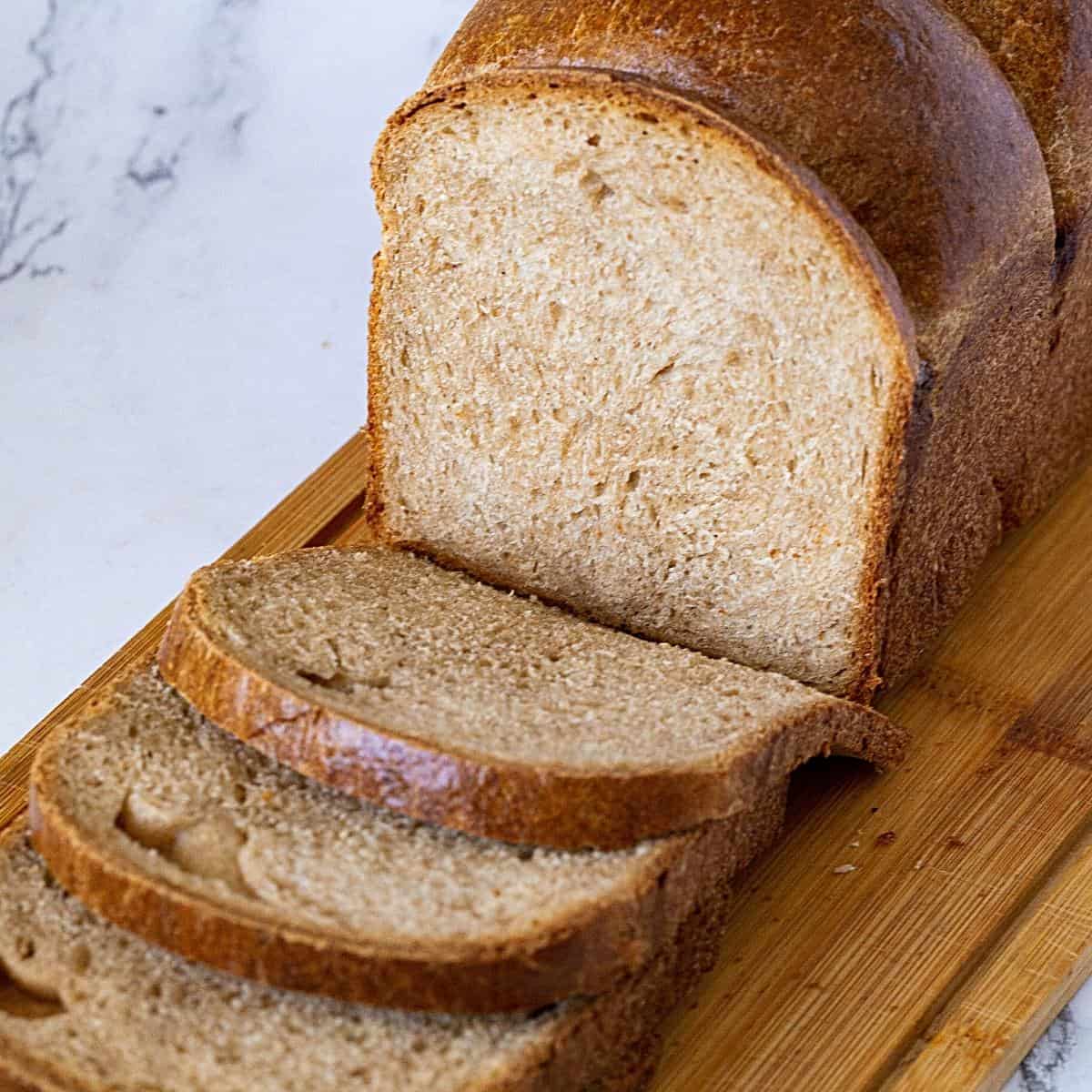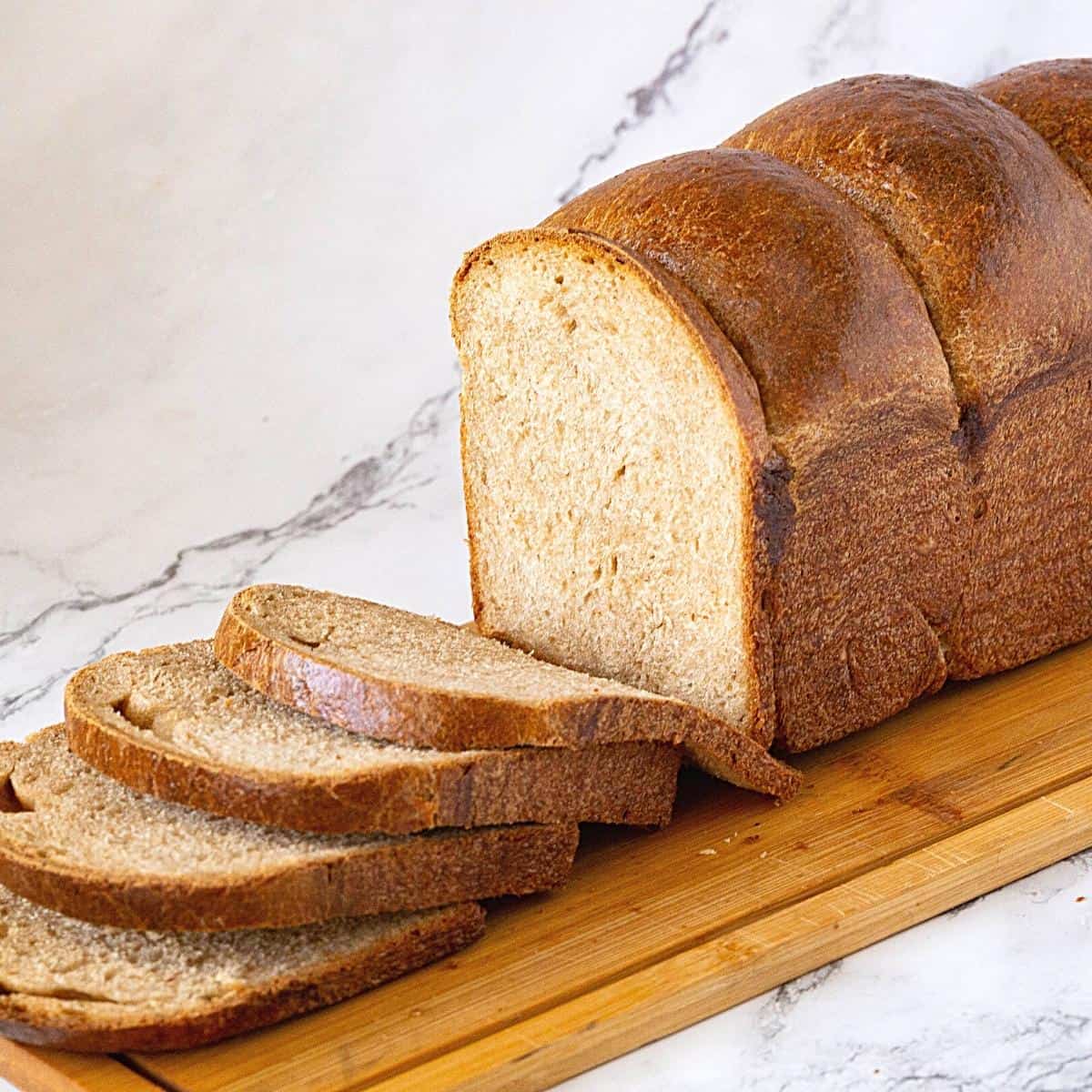The popularity of whole wheat bread is growing. Whole grain bread made is rich in vitamins and minerals. It contains more dietary fiber than white bread, and whole-wheat loaves are often higher in vitamin E. Whole-wheat bread can also provide a nutty taste and a hearty feel. I love making bread at home. I can honestly say, if you make good homemade bread you will not buy store-bought bread often. The process is so therapeutic. Watching that gluten develop into a light, airy, yet soft and chewy bread is fun. I wish you could touch and see how soft and tender the crumb on this whole wheat sandwich bread is. I must admit that I love my white sandwich bread so much that I have had a hard time switching to whole wheat. And yet, over the years I have perfected this recipe, and it’s now one of our favorite sandwich bread recipes.
Why make this recipe?
This is the most delicious whole wheat loaf you will make! Soft, light, and airy with a tender crumb. The recipe is very simple and easy to make. I personally would recommend using a stand mixer if you have one. This dough does need a bit of kneading so we can activate the gluten. Whole wheat can be dense so we do not use 100% whole wheat. We do take advantage of the gluten present in white flour. If you look at the method below you will see I soak my flour in hot milk for a few minutes this is a great way to soften the gluten in whole wheat flour and develop gluten. Often a process used in sourdough baking. I highly recommend you don’t skip that step. The resulting bread is softer than regular whole wheat bread. Leftover bread slices can be used to make French toast.
Whole wheat sandwich bread
Autolyze – In the large bowl of a stand mixer combine the whole wheat flour and bread flour. Pour the hot, almost boiling milk and stir to combine. Leave it alone for 30 minutes until it becomes warm or close to room temperature.Pro tip – The hot milk will soften the gluten in the whole wheat flour, which gives us a nice soft bread. Yeast mixture – In the meantime, in a mixing bowl or measuring cup, add warm water, yeast, eggs, honey, and oil. Combine well and set aside for a few minutes.
Knead – When the flour mixture is barely warm, add the yeast mixture. Turn the mixer on with the dough hook attachment and knead on medium-high speed for about 7 minutes or by hand for 10 minutes. Scrape the bottom and sides of the bowl. Pro tip – If you do not like kneading, I highly recommend using a stand mixer with the hook attachment. Butter – Next, gradually add the salt and soft room temperature butter. Knead for another 4 minutes until you have a smooth, soft, elastic, but slightly sticky dough.Pro tip – The dough will split and break apart when you add the butter but it will come together as you continue to knead.
Rise – Transfer the dough to an oiled bowl. Cover with plastic wrap or a clean kitchen towel and leave to rise in a warm place for about 90 to 120 minutes until double in volume.Pro tip – In winter, you may need 90 minutes or more. But in summer, the dough may double in 45 minutes. If you can’t attend to it at that moment, de-gas, reshape, and let double in volume again. Divide – Once double in size, remove the dough onto a lightly floured surface. Degas or remove air then divide the dough into 4 portionsPro tip – At this point, there is no need for additional flour. So use a light dusting of flour. Shape – Shape each portion into a ball then shape each ball into a sausage. Flatten each ball into a dough disc Then the two sides into the middle. Roll from the top towards the bottom like a log to the same size as the width of the loaf pan. Place the four sausages into a greased or sprayed loaf life.
Proof – Place the four sausages into a greased or sprayed loaf life seam-side down. Cover the loaf pan with plastic wrap or clean kitchen cloth and leave it in a warm place for about 45 to 90 minutes or until it almost doubles in volume.Pro tip – You can also place the loaf pan in the fridge to slow proof for about 14 to 16 hours.
Oven – About 20 minutes before baking preheat the oven at 350°F / 177°C / Gas Mark 4. Egg wash – Brush the bread with a beaten egg. You can even sprinkle with some sesame or poppy seeds.Pro tip– Egg wash is a full egg with 2 tbsp of water. An egg wash will give a nice golden color. If you can’t use egg, milk or cream will work just as well. Do not use oil or butter as it will create a crust. Bake – Place the loaf in the oven and bake until you have a nice golden brown color. The 13-inch loaf pan will take about 70 to 90 minutes and the 9-inch loaf will take about 40 to 55 minutes. If the top starts to get too dark, tent with an aluminum foil sheet.Pro tip – When baked, the internal temperature of the bread should be about 195 F. The bread will have a hollow sound on the bottom when tapped.
Cool – Remove from the oven and cool in the pan for no more than 10 minutes. Then, cool completely on the wire rack. Pro tip – Do not leave the loaf on the loaf pan for too long as the steam will make the bread soggy on the bottom. Keep warm – Cover the loaf with a clean kitchen cloth to keep it soft. Let the bread cool completely for at least 15 minutes before you slice.Pro tip – Covering the bread with a cloth will help the bread retain moisture and prevent it from drying out. Enjoy!
Tips for success
Measure all ingredients ahead of time so you don’t forget anything at the last minute. For accuracy use a weight measure for the ingredients because every cup of flour can weigh differently depending on how you fill it. The milk must be hot when you add it to the flours. But, remember to let it cool down to room temperature before you add the instant yeast mixture. Though instant dry yeast has a long shelf life, it can get ruined. Always check the expiry of the yeast. If unsure, combine the yeast with liquid ingredients and let stand 5 minutes. If it gets foamy the yeast is good to go if not best to buy fresh yeast or check the temperature of the milk Keep salt away from yeast as it can kill the yeast. I like to combine it with the flour and then add it to the yeast mixture. A soft loose well-hydrated dough is not necessarily a bad thing, it often will give you soft fluffy bread so don’t be tempted to add more flour than mentioned in the recipe. Kneading is key to making good bread. While kneading by hand can be therapeutic using a stand mixer is easier and quicker Leave the dough at room temperature to rise until it doubles in volume. While not recommended when in haste you can place it in a warm (not hot) oven this will expedite the rise. Bread does not have to be time-consuming. You can leave the dough in the fridge to rise for a few hours (even overnight) while you go about your chores. A slow rise will develop flavor to the bread. Always preheat the oven for at least 30 minutes before you place bread in or the low temperature will spread the dough too much.
Frequently asked questions
Pullman loaf pan, Brioche Pullman Loaf Recipe BEST Sandwich Bread Recipe Sourdough Sandwich Bread Challah Sandwich Bread Shokupan Sandwich Bread Brioche Sandwich Bread Recipe No-Knead Sandwich Bread
Thank you for sharing - Save for later
